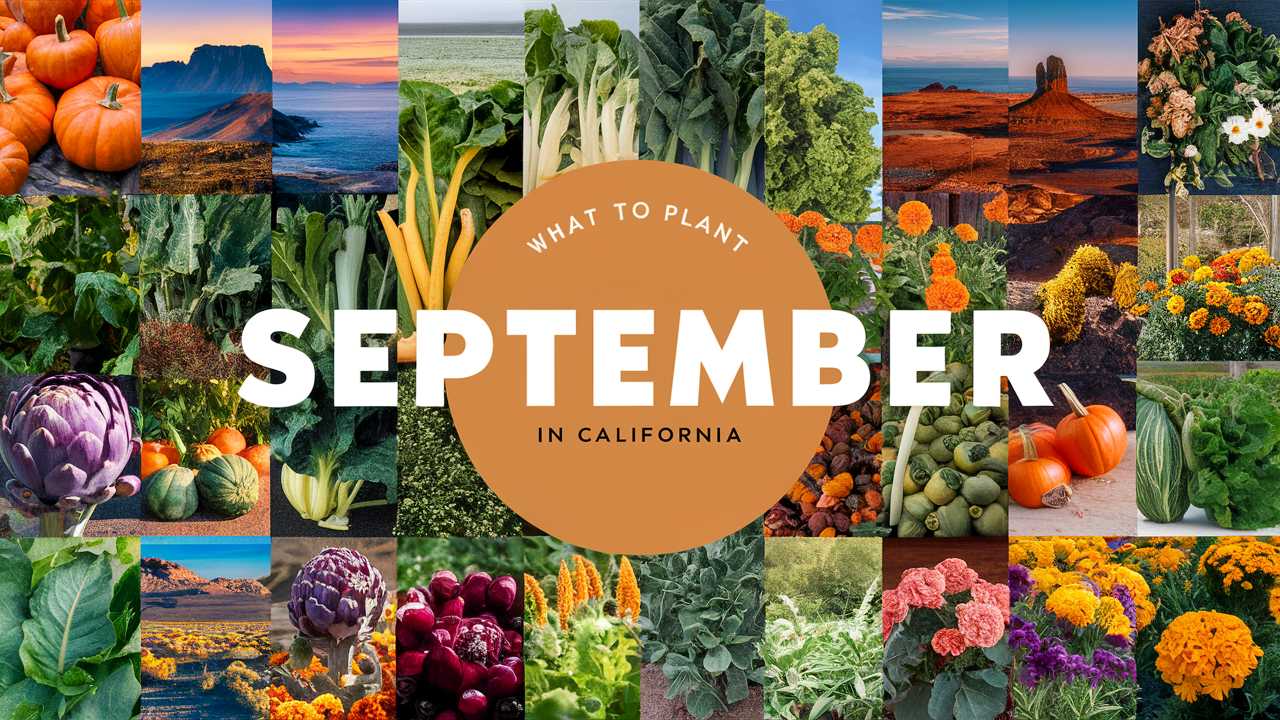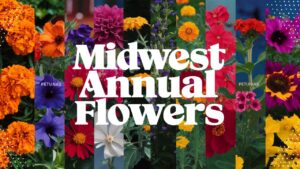Whether you’re tending a backyard garden in Los Angeles or a community plot in San Francisco, here’s a comprehensive guide to what to plant in September across the Golden State.
Vegetables To Plant
September is a prime time for planting cool-season vegetables in California. The temperatures start to drop, providing a perfect environment for the growth of robust fall crops. Below are ten excellent choices for vegetable planting during this month, categorized based on their respective USDA zones.
Broccoli

Temperature Tolerance: Broccoli thrives in cool temperatures, ideally between 60°F and 70°F.
Planting Dates: In Southern California (Zone 10-11), you can start seedlings indoors by the end of August and transplant them in early September. In Central California (Zone 9), sow seeds directly into the garden mid-September.
Broccoli is a nutrient-dense vegetable packed with vitamins C and K, fiber, and antioxidants. It prefers rich, well-draining soil, so be sure to amend your garden bed with organic compost to ensure its vigorous growth. Make sure to keep the soil consistently moist to help establish the seedlings.
Kale
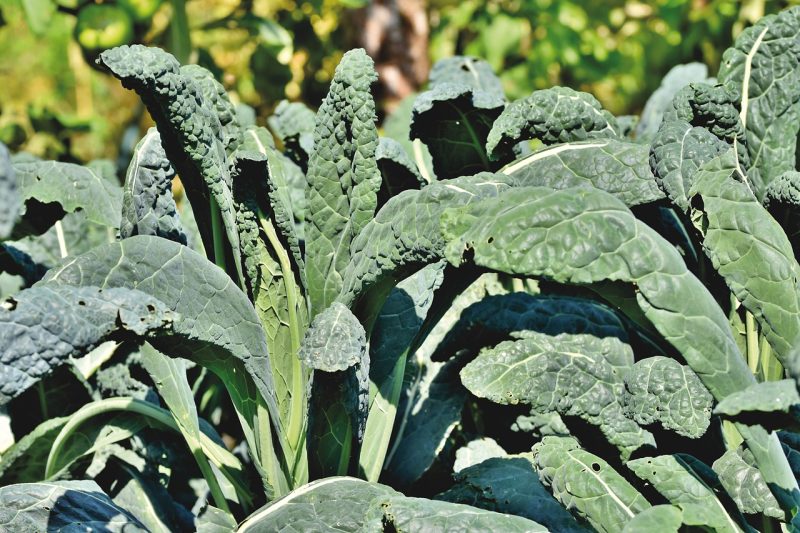
Temperature Tolerance: Kale can tolerate temperatures as low as 20°F, making it perfect for fall harvests.
Planting Dates: In all Californian zones, you can start sowing seeds directly outdoors from early September onward.
Kale is not only a superfood packed with nutrients, but it is also incredibly versatile in the kitchen. This leafy green grows best in enriched soil and can withstand frost, which may even enhance its flavor. Regular harvesting encourages new growth, so don’t hesitate to pick the outer leaves as they mature.
Carrots

Temperature Tolerance: Carrots do best in temperatures from 60°F to 70°F.
Planting Dates: Direct sow seeds in Southern California in early September. Mid to late September is suitable for Central California.
Carrots are a rewarding crop, offering both orange heritage varieties and colorful heirlooms like purple and red. For the best results, plant seeds in loose, sandy loam soil, making sure to thin them out as they grow, ensuring enough space to develop strong, straight roots. Keep the soil consistently moist to aid germination.
Radishes

Temperature Tolerance: Radishes thrive in cooler conditions, ideally between 50°F and 65°F.
Planting Dates: Start sowing seeds in Southern California by late September. In Central and Northern California, they can be sowed throughout September.
Known for their fast growth, radishes are perfect for beginner gardeners. They mature in as little as three to four weeks, making them a great choice for succession planting; you can sow a new batch every couple of weeks for continuous harvest. Radishes prefer well-drained soil and need regular watering to avoid becoming woody.
Spinach

Temperature Tolerance: Spinach is particularly frost-tolerant and thrives in temperatures from 50°F to 68°F.
Planting Dates: You can plant spinach seeds directly in the Southern and Central California regions from early to mid-September.
Spinach is a hardy green that grows rapidly, making it an excellent choice for fall gardening. Rich in iron and vitamins, this leafy vegetable performs well in shaded spots, particularly earlier in the fall. Be sure to water consistently, especially during dry spells.
Beets
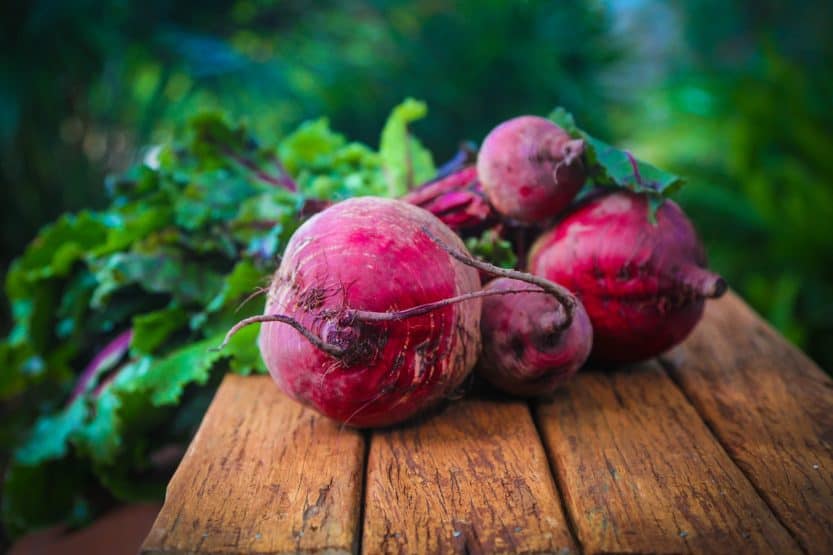
Temperature Tolerance: Beets prefer cooler weather, ideally between 50°F and 65°F.
Planting Dates: Sow seeds in Southern California from mid to late September and throughout September in the Central regions.
Beetroots are not only delicious but also boast numerous health benefits. They thrive in well-draining soil with ample organic matter. As they grow, ensure they have enough space, ideally about 3 inches apart, and monitor their moisture levels to facilitate sweet, tender roots.
Cauliflower
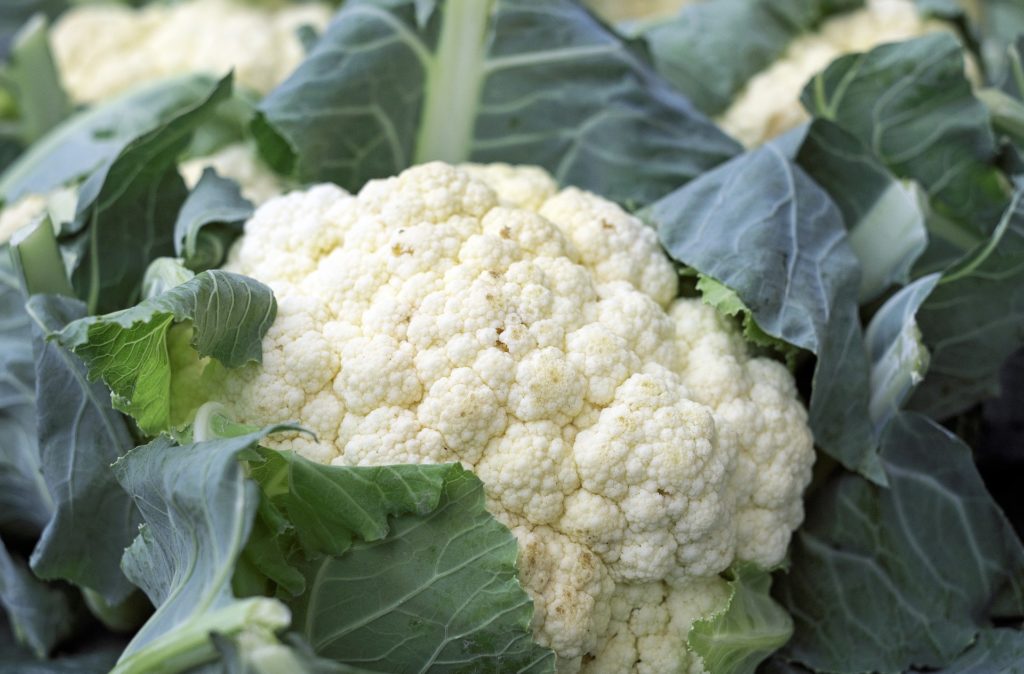
Temperature Tolerance: Cauliflower enjoys temperatures between 65°F and 70°F.
Planting Dates: Start seedlings indoors in Southern California and transplant in mid-September; for Central California, direct sow seeds mid-September.
Cauliflower is a member of the brassica family, similar to broccoli, and it requires rich soil and consistent moisture to flourish. One of the challenges with cauliflower is “buttoning,” where heads form prematurely due to heat stress, so plant the seeds at the right time and manage soil moisture around 75%.
Lettuce

Temperature Tolerance: Lettuce prefers cool temperatures, ranging from 60°F to 65°F.
Planting Dates: Seedlings can be planted directly in southern California by mid-September. Northern California gardeners can sow seeds throughout the month.
Lettuce is a fast-growing crop that benefits from successive sowing. There are many varieties; romaine, butterhead, and leaf lettuces all thrive in September. Using shade cloth can protect them from the harsher sun and help maintain consistent moisture in the soil.
Peas
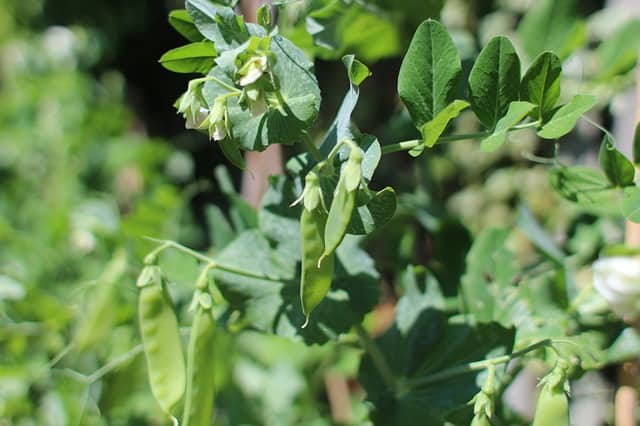
Temperature Tolerance: Peas enjoy the cool periods of early spring and late fall, thriving best between 60°F and 70°F.
Planting Dates: Plant directly in the garden from mid to late September in Southern California and throughout September in Central California.
Peas are a classic autumn crop that adds nitrogen to the soil while enriching its texture for future plantings. They can be planted in rows and need support to climb as they grow. Regular watering is essential, especially as the seeds germinate.
Swiss Chard

Temperature Tolerance: Swiss chard thrives in temperatures ranging from 50°F to 70°F.
Planting Dates: Sow seeds direct from early to mid-September throughout California.
This colorful leafy green can tolerate mild frost and produces continuously through to spring. Chard prefers well-draining soil rich in organic matter and can even grow well in partially shaded areas. Harvesting the outer leaves encourages continued growth.
Flowers To Plant
September is not only about vegetables; it’s also the perfect time for enhancing your garden with beautiful blooms. With the right selections, you can have a garden alive with color long into the fall. Here are ten flowers that flourish when planted in September across California.
California Poppy
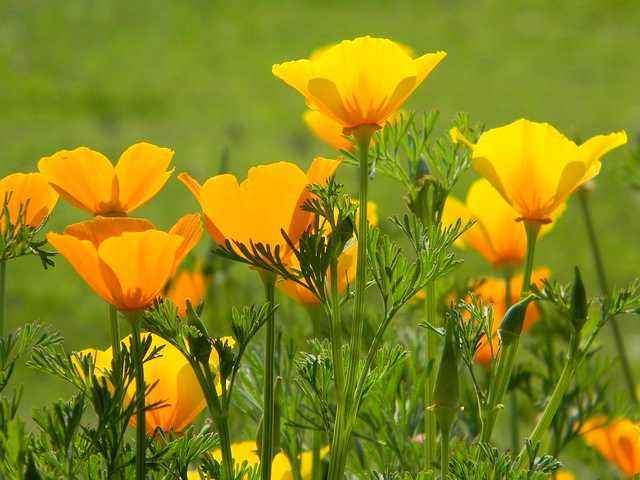
Temperature Tolerance: California poppies flourish in temperatures ranging from 65°F to 75°F.
Planting Dates: Seeds can be sown in Southern California from early to mid-September.
This iconic state flower is not only drought-tolerant but also attracts beneficial pollinators. California poppies prefer well-draining soil and full sun, making them an excellent choice for low-maintenance gardens. Once established, they require little water and will bloom through late spring of the following year.
Marigold

Temperature Tolerance: Marigolds thrive best in warm temperatures but can tolerate cooler nights.
Planting Dates: Sow seeds from early to mid-September throughout California.
Renowned for their bright colors and pest-repelling properties, marigolds are perfect for companion planting. They prefer full sun and well-draining soil. Regular deadheading will encourage a longer blooming season, making them a vibrant addition to any garden.
Snapdragons
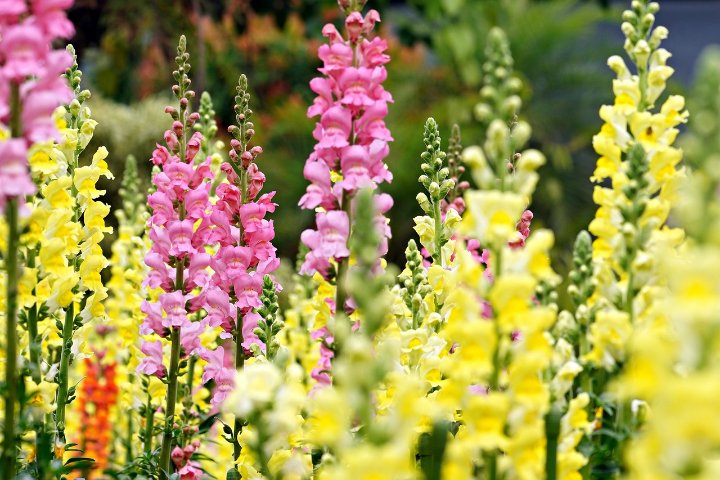
Temperature Tolerance: Snapdragons prefer cooler weather, thriving best between 60°F and 70°F.
Planting Dates: In Southern California, plant seeds directly in the garden in mid-September. Central California gardeners can plant slightly earlier in the month.
Snapdragons offer beautiful vertical growth and come in many shades. They prefer well-draining soil and moderate watering. Their stunning flowers can be a focal point in any garden arrangement, especially when mixed with lower-growing flowers.
Cosmos
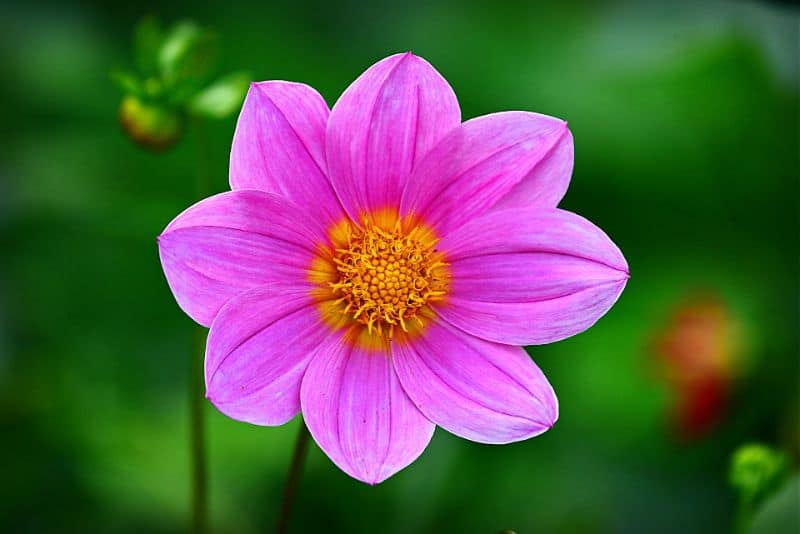
Temperature Tolerance: These hardy flowers thrive in warm weather but are tolerant of cooler conditions down to 40°F.
Planting Dates: Sow seeds directly in late September across California.
Cosmos are easy to grow and can reach impressive heights, creating stunning displays without requiring much care. They thrive in poor soil conditions and need full sun. Regularly cutting blooms for arrangements will promote further flowering throughout the season.
Zinnias
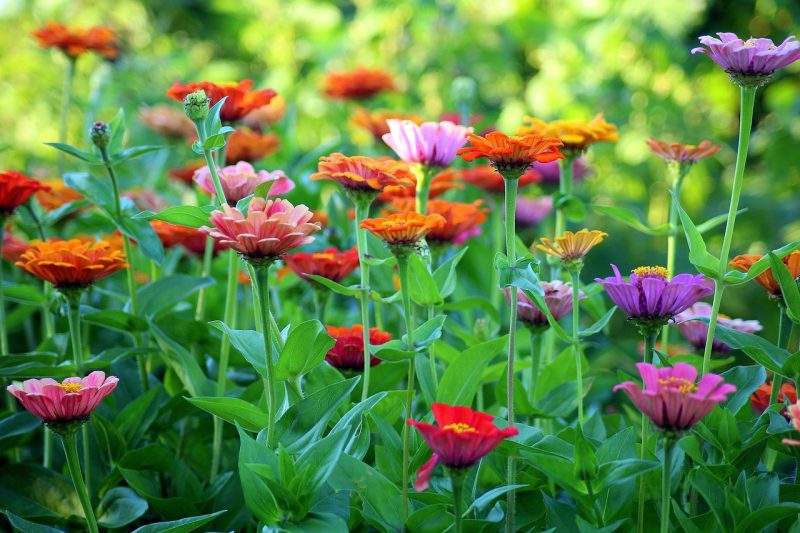
Temperature Tolerance: Zinnias flourish best in temperatures between 70°F and 90°F.
Planting Dates: Sow seeds in the garden during the first half of September in Southern California.
Zinnias are beloved for their colorful blooms and ability to attract butterflies. They prefer full sunlight and moderately rich soil. Regular pinching back will promote bushier growth and longer-lasting flowers.
Salvia
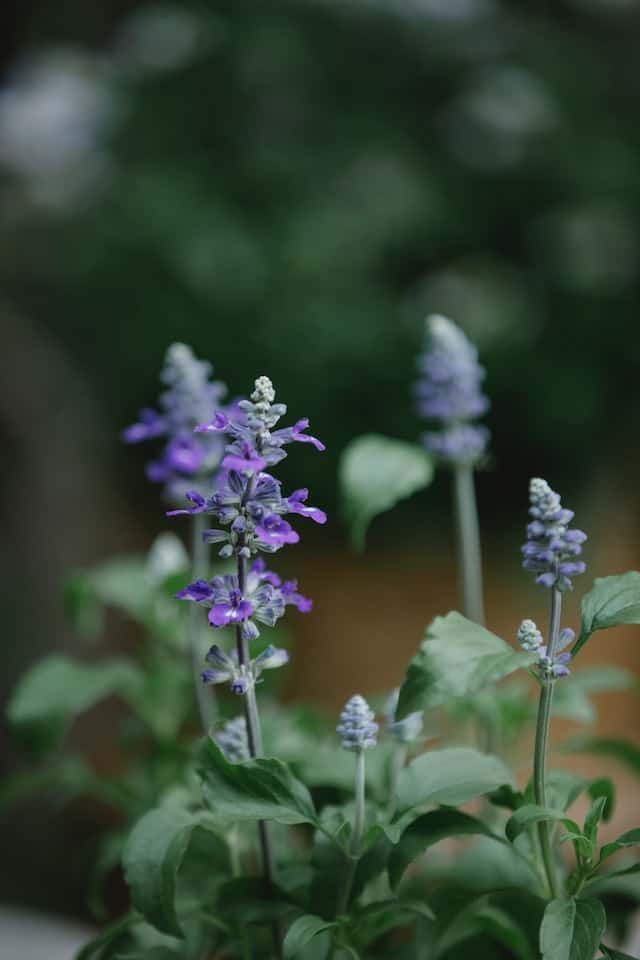
Temperature Tolerance: Salvia is adaptable but prefers warmer temperatures ranging from 70°F to 85°F.
Planting Dates: Plant in the garden from early to mid-September throughout California.
Known for their aromatic foliage and deep blue or purple flowers, salvia is a must-have for enhancing pollinator habitats. These drought-tolerant plants thrive in full sun and well-drained soils and can often bloom well into late fall.
Nigella (Love-in-a-Mist)

Temperature Tolerance: Nigella can tolerate a variety of temperatures but prefers cooler ranges.
Planting Dates: Sow seeds directly into the ground in Central and Southern California throughout September.
Nigella adds charm to cottage gardens with its delicate blooms and feathery foliage. It prefers full sun and well-draining soil, and its unique flowers can easily self-seed for continuous generations in future gardens.
Pansies

Temperature Tolerance: Pansies are frost-tolerant and can thrive in temperatures from 50°F to 70°F.
Planting Dates: Plant pansies outdoors from mid to late September across California.
With their cheerful, vibrant colors, pansies can bring life to borders and containers. Preferring mainly partial sun, they thrive in rich, well-draining soil and require regular watering to keep the blooms fresh. They are resilient and provide color during cooler months.
Ornamental Cabbage and Kale
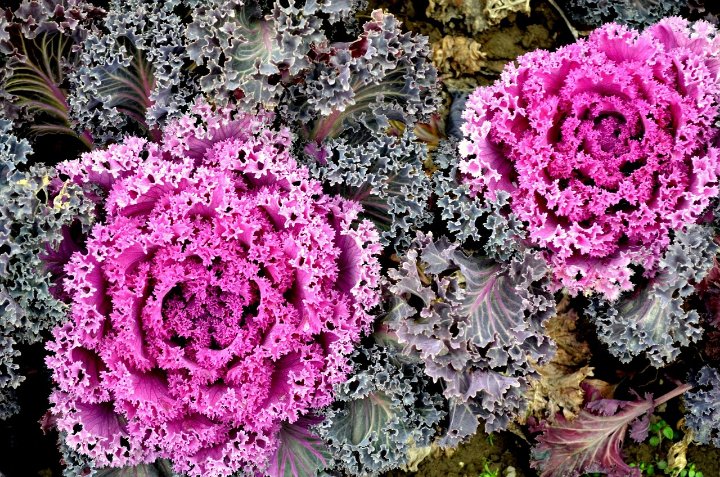
Temperature Tolerance: They thrive in cooler weather, ideally from 40°F to 70°F.
Planting Dates: Plant ornamental kale and cabbage from early to mid-September in all California regions.
These plants serve a dual purpose, adding visual interest and color to your fall garden and providing edible options. They prefer fertile, well-drained soil and full sun, and their vibrant colors intensify as the weather cools. They can last well into winter, providing year-round appeal.
Aster

Temperature Tolerance: Asters prefer cooler weather and thrive well in temperatures from 60°F to 70°F.
Planting Dates: In Southern and Central California, you can sow aster seeds from early to mid-September.
Asters are cherished for their late-season blooms that can attract pollinators and provide vibrant color in the fall. They thrive in moist, well-drained soil with a sunny location. Asters can create stunning borders and meadows, extending beauty in gardens past summer.
Herbs To Plant
Herbs are not only delightful in culinary practices but also beneficial in gardens for pest management and biodiversity. September presents an opportunity to establish various fragrant herbs ideal for California’s climate. Here are ten herbs that can flourish when planted this month.
Basil
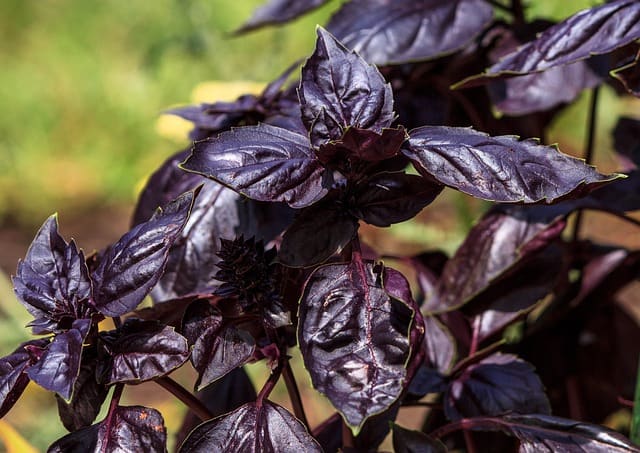
Temperature Tolerance: Basil loves warm weather, ideally thriving between 70°F and 80°F.
Planting Dates: Southern California gardeners can plant basil seeds from early to mid-September.
Basil is an essential culinary herb, especially during the summer months. In California, you can extend your basil season slightly into the fall by planting them in well-draining soil with full sun exposure. Regular harvesting encourages lush growth and promotes bushier plants.
Cilantro

Temperature Tolerance: Cilantro grows well in cooler temperatures ranging from 50°F to 70°F.
Planting Dates: Sow seeds outdoors in Southern California from mid-September onward.
Cilantro is a quick-growing herb that can thrive in a variety of soils. Regular harvesting keeps the plant healthy and productive. Ensure they receive enough water, especially during dry periods, to maintain lush green foliage for your culinary endeavors.
Chives
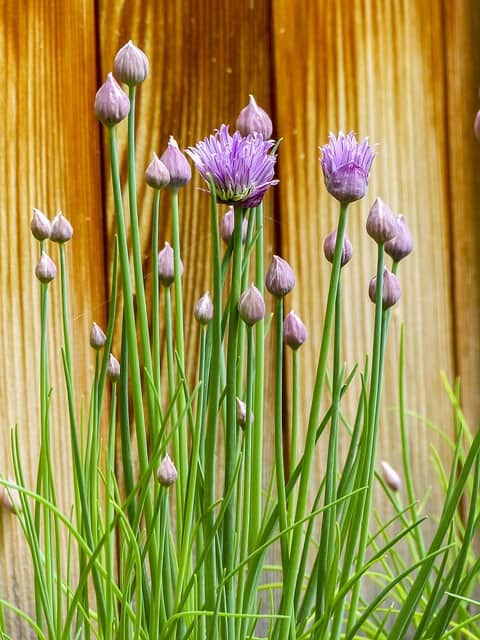
Temperature Tolerance: Chives thrive in temperatures between 50°F and 75°F.
Planting Dates: Plant chive seeds directly in the garden throughout September in California.
Chives are perennials that will continue to provide fresh greens year after year. They flourish in sunny locations with well-drained soil. Harvesting before flowering keeps their flavor strong, and they can add an onion-like taste to a variety of dishes.
Parsley

Temperature Tolerance: Parsley can tolerate a range from 50°F to 70°F.
Planting Dates: Sow seeds directly in the garden in early September in all Californian zones.
Parsley is versatile in both garden aesthetics and culinary uses. It prefers moist, fertile soil with full sun or partial shade. As a biennial plant, it can be harvested regularly, thereby encouraging continued growth throughout the fall.
Oregano

Temperature Tolerance: Oregano thrives in temperatures between 60°F and 85°F.
Planting Dates: Plant seeds or transplants throughout September in Southern California and Central California.
Oregano is a hardy perennial herb that grows best in dry, well-draining soil and full sun. Regular harvesting encourages bushiness and ensures a flavorful addition to numerous dishes. It’s drought-tolerant once established, making it perfect for water-wise gardens.
Thyme
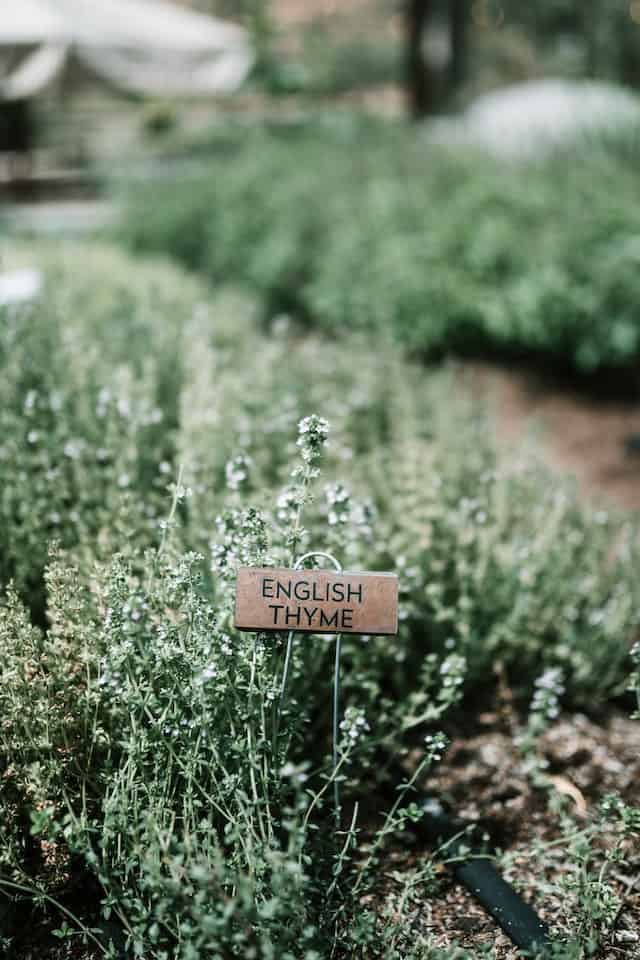
Temperature Tolerance: Thyme can tolerate temperatures as cool as 40°F.
Planting Dates: Throughout September in Southern and Central California, sow seeds or plant cuttings directly in the agreed soil.
Thyme is a robust herb that provides flavor and serves aesthetic purposes in any garden. It prefers full sun and well-draining sandy soils and thrives with minimal irrigation once established. It can be used in culinary dishes and makes for a lively ground cover in garden beds.
Rosemary

Temperature Tolerance: Rosemary thrives well in temperatures ranging from 65°F to 80°F.
Planting Dates: Plant seedlings in early September across all Californian zones.
Known for its hearty growth and aromatic properties, rosemary prefers well-draining sandy soil and sunny locations. It can withstand drought conditions, making it an excellent choice for low-water-use gardens. Trim back branches for a fuller plant and maintain its health.
Dill
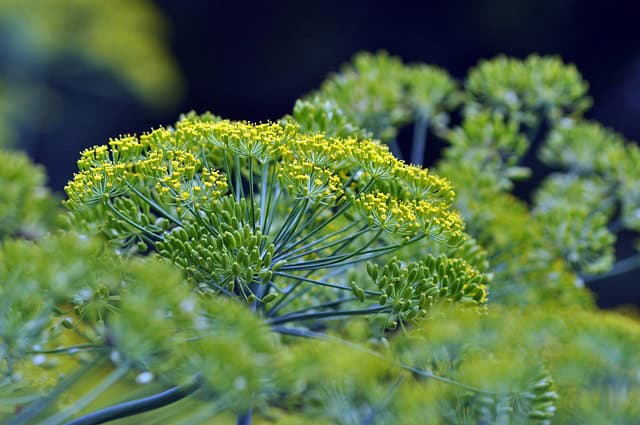
Temperature Tolerance: Dill performs best in moderate temperatures between 60°F to 70°F.
Planting Dates: Sow in Southern California from mid-September onward.
Dill is a flavorful herb with medicinal qualities, thriving in rich, well-drained soil. The plant’s unique fragrance deters pests and attracts beneficial insects. Regular pruning promotes bushier plants and ensures a continuous supply throughout the growing season.
Mint
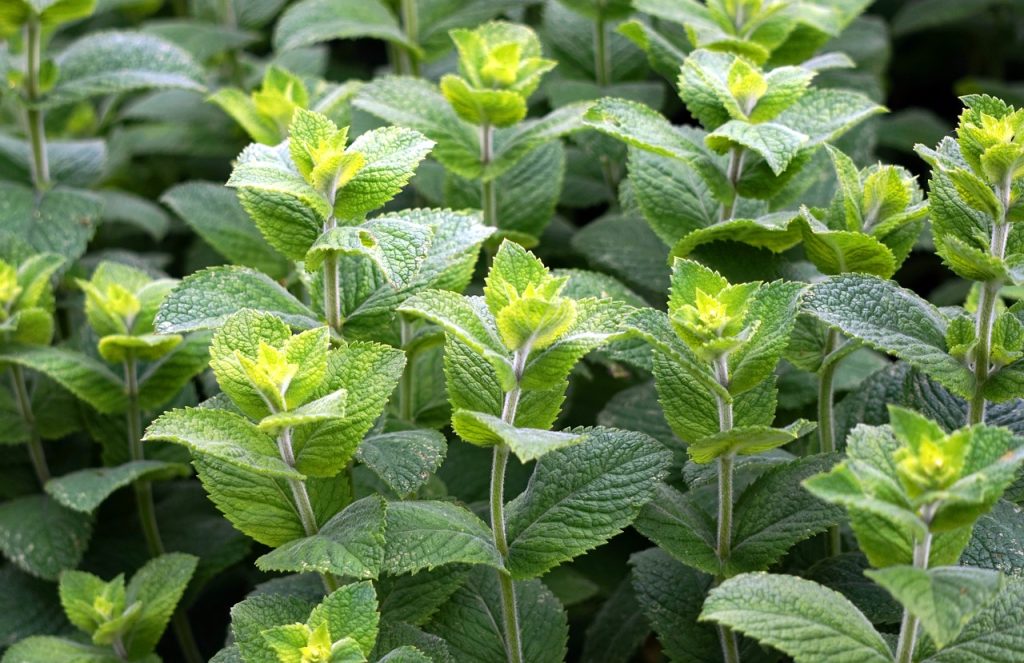
Temperature Tolerance: Mint thrives well in a range of temperatures, from 50°F to 70°F.
Planting Dates: Plant mint cuttings or seedlings in rich soil throughout September in all Californian zones.
Mint is a vigorous grower and can quickly dominate garden spaces. It prefers moist, well-drained soils in full sun to partial shade. Since it can be invasive, consider using containers to keep it from spreading uncontrollably.
Lemon Balm
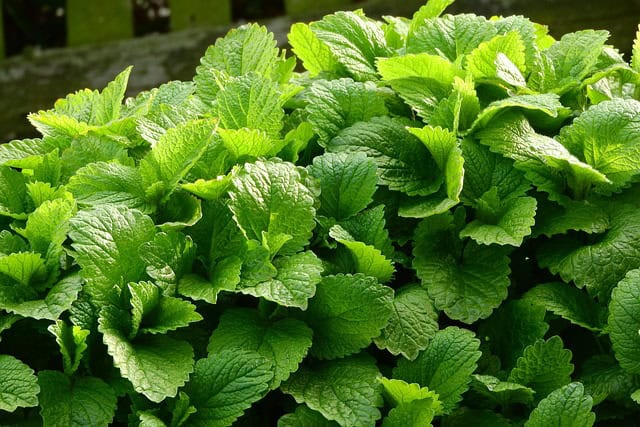
Temperature Tolerance: Lemon balm prefers milder temperatures from 50°F to 75°F.
Planting Dates: Plant seeds or transplants outdoors in mid-September in Southern California.
Lemon balm is a lovely, fragrant herb that thrives in sunny locations. It can adapt to various soil conditions but performs best in well-drained, rich soil. Harvest throughout its growing period to ensure bushy growth.
Landscape Plants To Plant
September is also an opportune month to enhance California’s natural beauty with landscape plants. By planting perennial and decorative plants now, you can ensure vibrant, thriving gardens that burst with color all through the cooler months. Here are ten landscape plant selections suitable for the month:
Ornamental Grasses
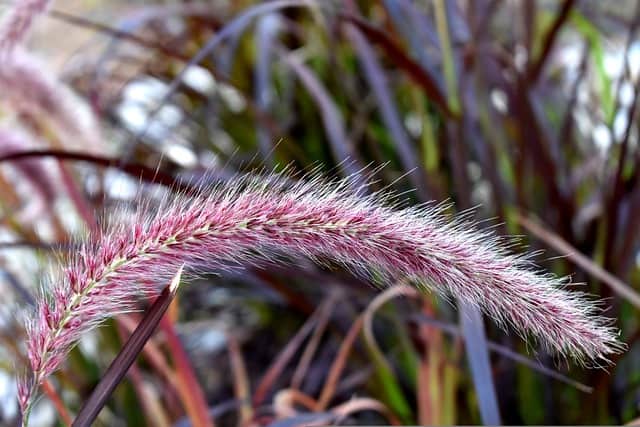
Temperature Tolerance: Many ornamental grasses thrive in a range of temperatures from 60°F to 80°F.
Planting Dates: Plant ornamental grasses in Southern California throughout September.
These grasses offer texture and movement to gardens and are often drought-tolerant, making them excellent choices for sustainable landscaping. Their varied heights and flowering seasons provide visual interest throughout the year.
Lavender
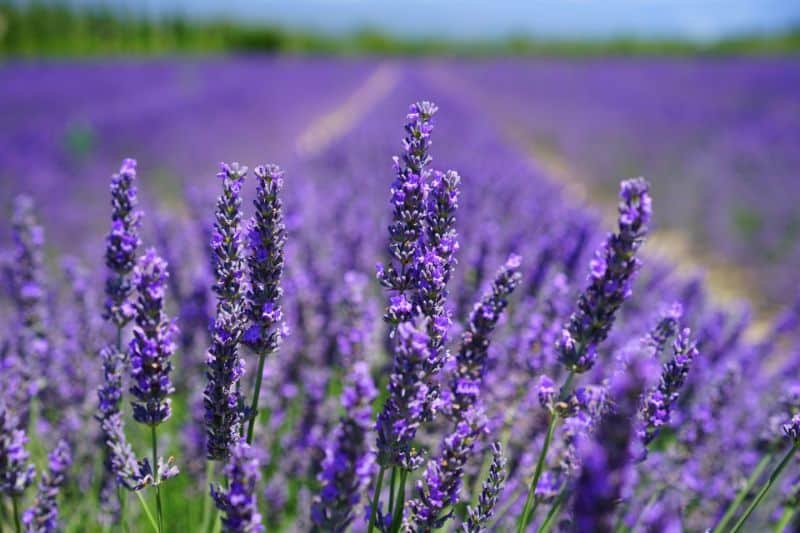
Temperature Tolerance: Lavender performs best in warm climates, ideally thriving between 70°F and 90°F.
Planting Dates: Plant lavender seedlings in Southern California from early to mid-September.
Lavender enriches gardens with its aromatic foliage and stunning purple blooms. It prefers well-drained, sandy-loamy soil and full sun. Established plants are water-wise, making them perfect for xeriscaping and providing habitat for pollinators.
Echinacea (Coneflower)
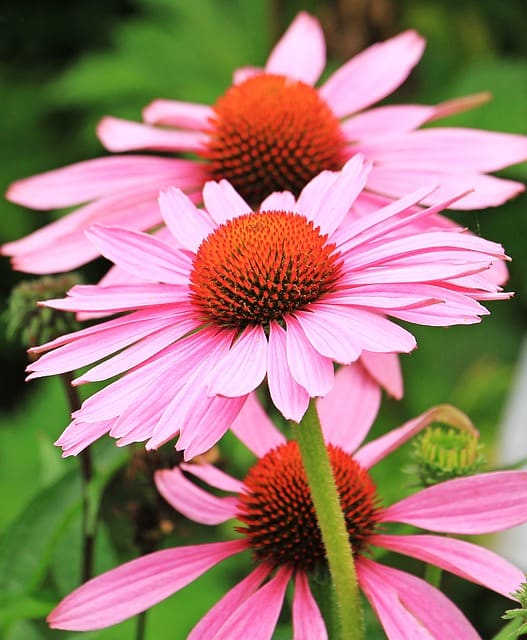
Temperature Tolerance: Echinacea thrives in warm summer and cool fall conditions, ideally from 60°F to 75°F.
Planting Dates: Early September is the ideal time to plant coneflowers in Central and Southern California.
Coneflowers are resilient perennials that attract pollinators and provide necessary nectar through their blooming season. They thrive in nutrient-rich soil with good drainage and can withstand drought, flourishing with minimal maintenance.
Sedum
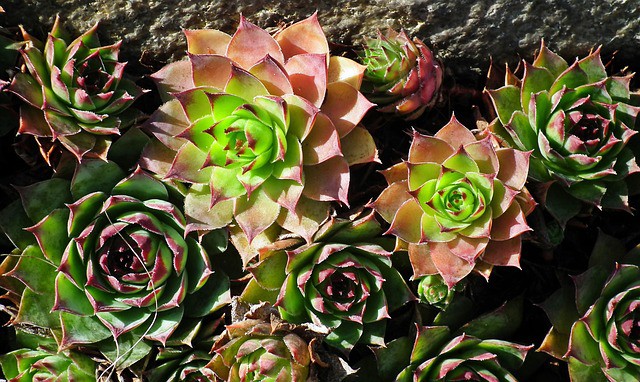
Temperature Tolerance: Sedum performs well in temperatures ranging from 60°F to 80°F.
Planting Dates: Across all Californian zones, sedum can be planted throughout September.
Sedums are succulent plants known for their drought resistance and unique foliage. They prefer sunny locations and dry, well-drained soil. Varieties like ‘Autumn Joy’ provide stunning fall blooms that can draw in butterflies.
Acanthus (Bear’s Breeches)
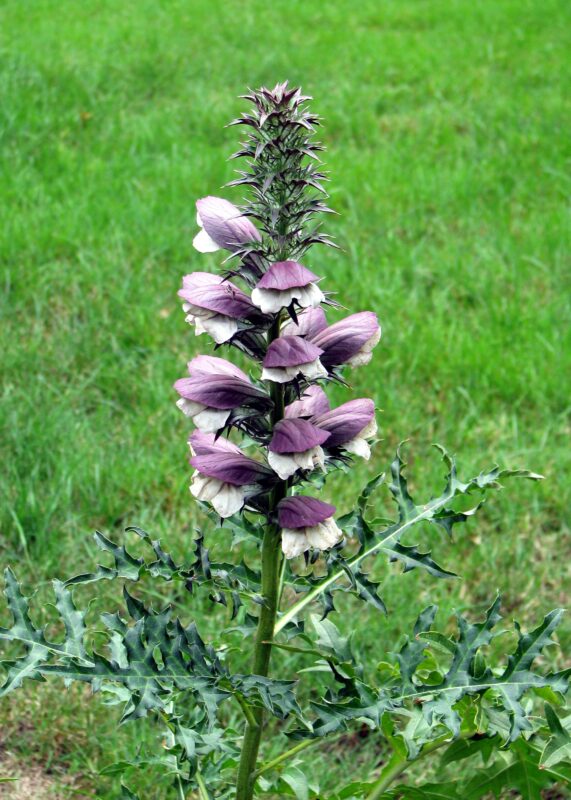
Temperature Tolerance: Acanthus thrives in mild to warm conditions, often temperatures ranging from 60°F to 75°F.
Planting Dates: Plant Acanthus throughout September in Southern and Central California.
These dramatic landscape plants offer textured foliage and impressive flower spikes. They thrive in well-draining soil and can handle partial shade, making them versatile for different garden settings.
Coreopsis
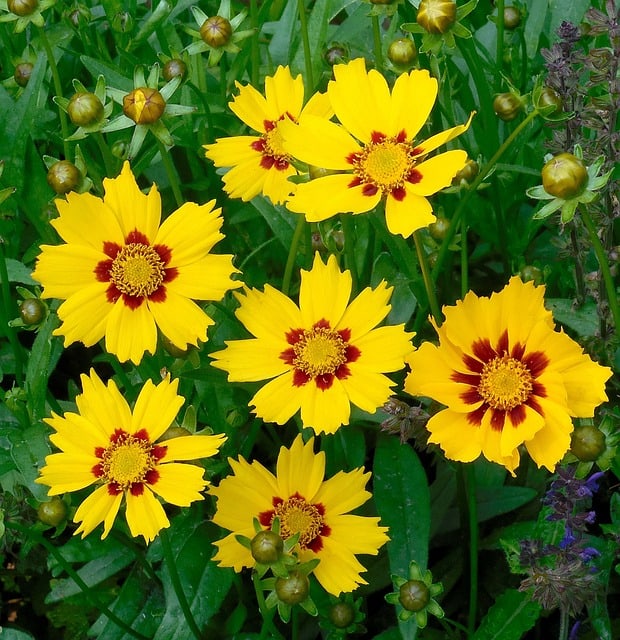
Temperature Tolerance: Coreopsis performs best in temperatures from 70°F to 80°F.
Planting Dates: September is an excellent time to plant coreopsis across California.
Coreopsis flowers offer bright yellow and orange blooms, attracting bees and butterflies to your garden. They do well in average soil and full sun, and once established, they are hardy and drought-resistant.
Leucadendron
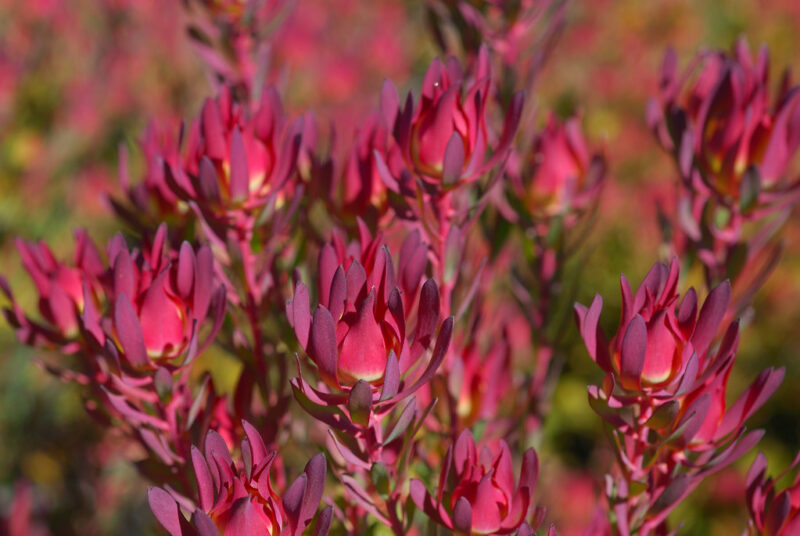
Temperature Tolerance: Leucadendrons thrive in warmer climates and prefer temperatures of 60°F to 80°F.
Planting Dates: Plant these in Southern California from mid to late September.
Known for their vibrantly colored foliage and striking form, Leucadendrons are excellent for water-wise landscaping. They prefer well-drained soil and full sun exposure, making them low-maintenance once established.
Agapanthus
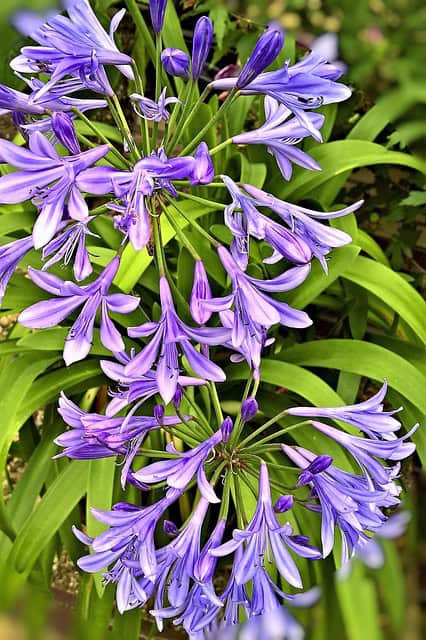
Temperature Tolerance: Agapanthus performs best in temperatures between 60°F and 80°F.
Planting Dates: Plant these attractive perennials throughout September in Southern California.
Agapanthus, or lily of the Nile, provides stunning blue or white flower clusters. They require well-drained soil and thrive in full sun. Once established, they are fairly drought-tolerant, adding vibrant color to any landscape.
Helenium (Sneezeweed)
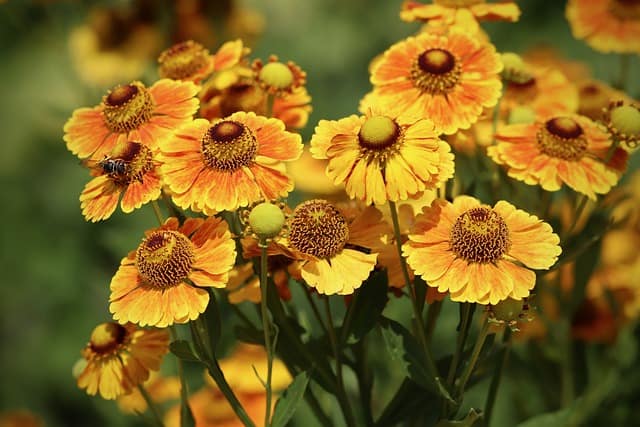
Temperature Tolerance: This plant prefers warm to moderate temperatures ranging from 60°F to 75°F.
Planting Dates: Plant Helenium in Southern California by mid-September to enjoy its vibrant fall blooms.
Known for their bright yellow and orange flower heads, Heleniums are hardy plants that will bloom through late summer and early fall. They grow best in average soil with good drainage and full sun. They also attract pollinators and beneficial insects.
Salvia (Sage)
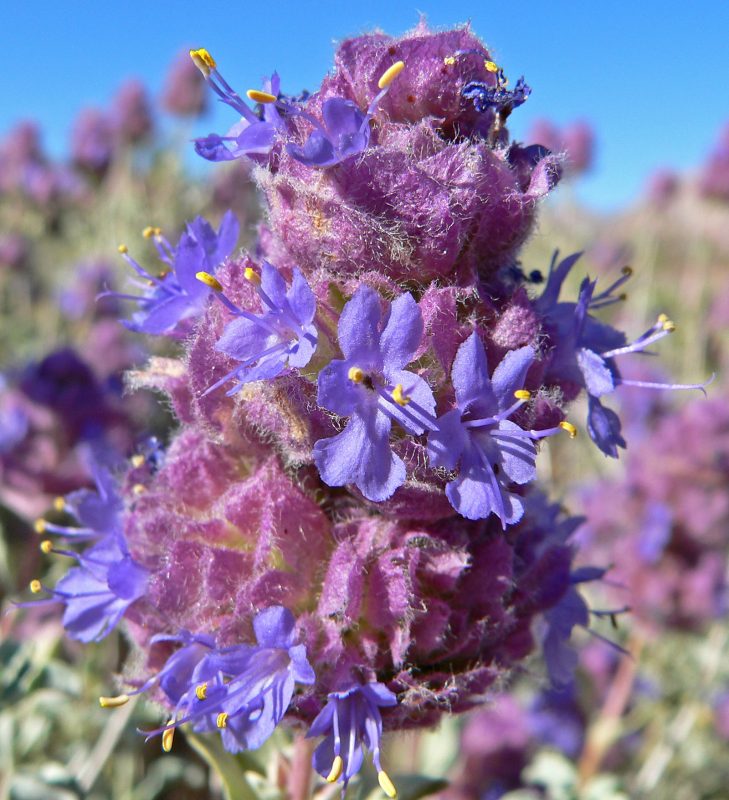
Temperature Tolerance: Salvia can adapt to moderate temperatures from 60°F to 85°F.
Planting Dates: September is ideal for planting salvia in all Californian zones.
Sage offers a variety of colors, textures, and scents beneficial for any landscape. As a semi-drought-tolerant plant, it requires full sun and thrives in well-draining soils. The pollinator-friendly nature of salvia means it will draw in butterflies and bees.


